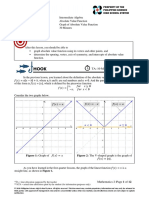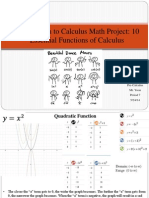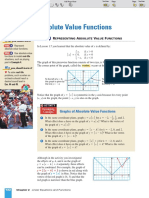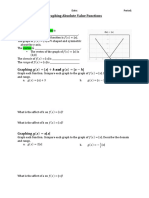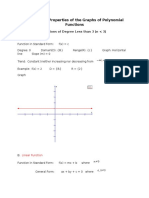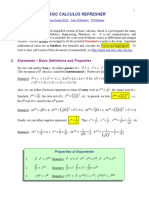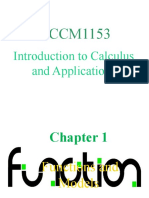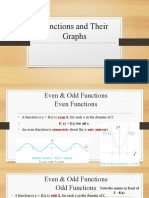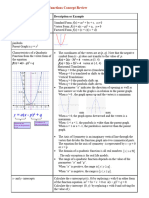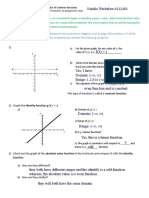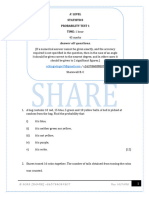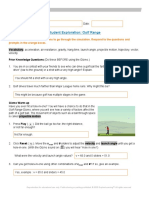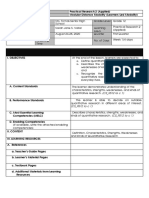0% found this document useful (0 votes)
37 views27 pagesAbsolute Value Function
The document provides an overview of the absolute value function, including its definition, graphing techniques, and properties such as domain, range, and symmetry. It explains how to determine the vertex of the graph and how transformations affect the graph's position and shape. Additionally, it includes examples and evaluation questions to reinforce understanding of the concepts presented.
Uploaded by
moira.perang08Copyright
© © All Rights Reserved
We take content rights seriously. If you suspect this is your content, claim it here.
Available Formats
Download as PDF, TXT or read online on Scribd
0% found this document useful (0 votes)
37 views27 pagesAbsolute Value Function
The document provides an overview of the absolute value function, including its definition, graphing techniques, and properties such as domain, range, and symmetry. It explains how to determine the vertex of the graph and how transformations affect the graph's position and shape. Additionally, it includes examples and evaluation questions to reinforce understanding of the concepts presented.
Uploaded by
moira.perang08Copyright
© © All Rights Reserved
We take content rights seriously. If you suspect this is your content, claim it here.
Available Formats
Download as PDF, TXT or read online on Scribd
/ 27

